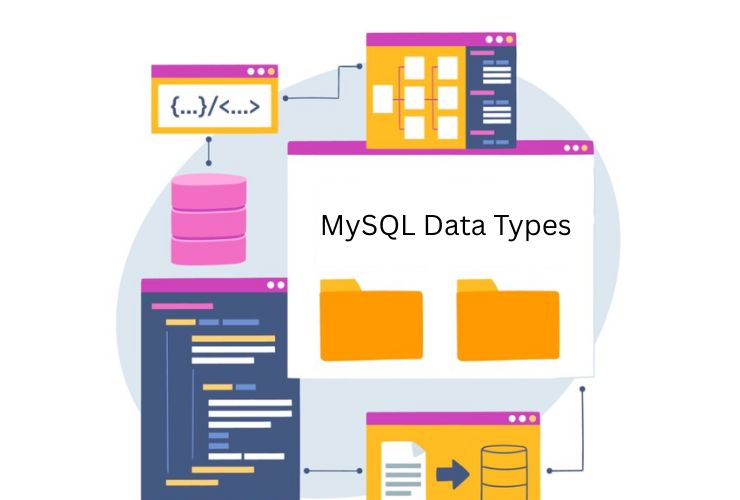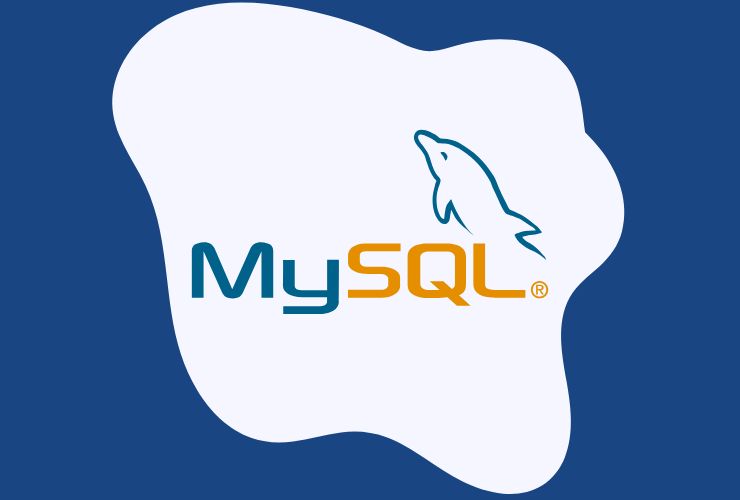When working with MySQL, choosing the right data type for each column is one of the most important decisions you’ll make when designing a database. It directly impacts your application’s performance, scalability, and data integrity. MySQL provides a wide variety of data types that allow developers to store and manage everything from simple numbers and text to dates and geographical coordinates.
In this post, we will give a step-by-step overview of MySQL’s primitive data types, demonstrate examples of practical use, and offer best practices on how to choose the right data type depending on what your application needs.
1. Numeric Data Types
MySQL uses numeric types to store different kinds of numbers, from integers to precise decimals and float values. Choosing the right numeric type improves storage efficiency and processing speed
Integer Types
- TINYINT: It occupies 1 byte of storage. It is best suited for small numbers like flags or status indicators.
- SMALLINT: It occupies 2 bytes and is best suited for reasonably sized integers.
- MEDIUMINT: It takes 3 bytes and is not that popular, but it can be useful when the value range is larger than SMALLINT but does not necessarily need to be as big as an INT.
- INT (or INTEGER): The most widely used integer type, taking 4 bytes and being best suited for most general-purpose applications.
- BIGINT: Uses 8 bytes and is designed for extremely large numbers, like IDs or arithmetic operations with high precision money.
Use Case: Apply integer types on IDs, counts, indexes, and any that do not need fractions or decimal points.
Floating-Point and Fixed-Point Types
- FLOAT(p): Holds about values with floating decimal points. Has the use where some acceptable precision loss is tolerable.
- DOUBLE: Holds double-precision floating-point numbers. Best suited for scientific computation and measurement requiring a wider range and higher precision.
- DECIMAL (or NUMERIC): Unlike floating-point types, DECIMAL holds precise numeric values and is best used in financial and monetary data where precision is paramount.
Use Case: Use DECIMAL for prices, financial information, and any location where accuracy is required. Use FLOAT or DOUBLE for analytics, scientific information, or real-time computations where a little imprecision is tolerable.
2. String Data Types
String data types are used to store binary, text, or alphanumeric information. Fixed or variable strings utilized simply rely on the information you are storing.
Character and Text Types
- CHAR(n): Stores fixed strings. MySQL pads the value with spaces if it is less than n in length. Faster for columns where lengths are expected, such as codes of a fixed length.
- VARCHAR(n): Stores variable-length strings of up to 65,535 bytes. Less space-efficient for unknown or very varying lengths.
Text Types:
- TINYTEXT: Up to 255 bytes.
- TEXT: Up to 65,535 bytes.
- MEDIUMTEXT: Up to 16 MB.
- LONGTEXT: Up to 4 GB.
Developers use these to store larger text fields such as product descriptions, blog entries, or comments.
Binary Types:
- BINARY and VARBINARY: Hold binary type byte strings instead of text, perfect for encrypted data, images, or files.
- Special String Types:
- ENUM: Allows a column to hold a single value from a list of pre-defined values. Great for status, role, or priority type fields.
- SET: Stores zero or more values from a given list, perfect for multi-select items.
Use Case: Use VARCHAR for addresses, emails, and names; TEXT for long text descriptions; ENUM for restricted fixed choices.
3. Date and Time Data Types
MySQL offers many temporal data types to hold date and time data. Choosing the appropriate one will simplify filtering, sorting, and scheduling.
- DATE: Stores a date value in the YYYY-MM-DD format. Suitable for birth dates, due dates, or logs.
- TIME: Stores time in HH:MM:SS format. Suitable for time fields or duration fields alone.
- DATETIME: Stores date and time in YYYY-MM-DD HH:MM:SS. Suitable for appointment booking or storing activity timestamps.
- TIMESTAMP: Similar to DATETIME but it automatically converts to and from UTC depending on time zones.
- YEAR: A four-digit year. Suitable for holding only the year part of a record (e.g., graduation year, production year).
Use TIMESTAMP for fields that automatically update (e.g., created_at), and use DATETIME when handling information not sensitive to UTC.
4. Spatial Data Types
MySQL supports native built-in spatial data types for storing geographic or geometric data, most commonly used in mapping, GIS, and location-based services.
- GEOMETRY: The class from which all the spatial types inherit.
- POINT: A point in space using coordinates.
- LINESTRING: A series of points for a line.
- POLYGON: A many-sided shape.
- MULTIPOINT, MULTILINESTRING, MULTIPOLYGON, GEOMETRYCOLLECTION: Sets of the aforementioned types.
Use Case: Utilize spatial types when using maps, coordinates, and actual geographic data within applications such as delivery tracking or store locators.
5. JSON Data Type
MySQL also provides a JSON data type, which lets you store structured documents within a column. It is handy when the data structure of your data will shift or if you have nested or hierarchical data models.
Advantages:
- Supports partial updates on fields.
- Supports JSON syntax validation.
- Is well-suited for new APIs and applications.
Drawbacks:
- Less efficient than structured columns in indexing and searching.
- Slow queries are slower than normalized relational structures.
Use Case: Use JSON for HTML-formatted configuration data, API response, or metadata that does not require new tables.
Best Practices for Selecting MySQL Data Types
- Use the smallest possible data type: The smaller data types save space and improve query performance.
- Avoid TEXT and BLOB whenever possible: They’re slower to index and sort.
- Always declare correct indexes: Avoidably on columns used in JOINs, searching, or filtering.
- Use ENUM for status or category columns: Great for small, predefined sets.
- Be careful with JSON: Versatile, but best in some cases where relational structure is not important.
Conclusion
A well-structured database starts with selecting proper data types. Knowing the variety of MySQL offers — from numbers and strings to dates and even spatial or JSON data — helps you design higher-quality, higher-performance, and more reliable applications.
Using effective data types boosts performance, reduces storage costs, and makes your database easier to manage in the long term. Always remind yourself what type of data you possess, estimated amount, and data access patterns in selecting the data types.
With or without developing a project for personal or commercial use, your MySQL data types form the basis of a working and stable database framework.














